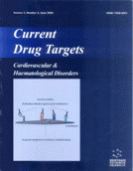Abstract
The chorioallantoic membrane (CAM) is widely used as a model to examine angiogenesis, and antiangiogenesis. Its advantages over mammalian systems include low cost, and ease of preparation, as well as the absence of a mature immune system. Although the use of this model presents a major opportunity to compare data generated in different laboratories, thereby expediting the evaluation of new drugs, angiogenic potential of cells and tissues, and body fluids, as well as to provide meaningful information concerning the molecular mechanisms involved, the wide range of methodologies used, especially in the quantification of the response, make any comparison essentially invalid. In this review, the major methodologies for all aspects of the use of the CAM in angiogenesis-related studies have been described. These include the source of the CAM, the methods for culture, and methods for evaluation of normal growth and of the response to an intervention. Methods for applying an intervention, the age for intervention and the duration of an intervention are documented. The structure and growth characteristics, the nature of possible responses to stimulation and inhibition of angiogenesis, and the complications of nonspecific reactions have been examined. The need for a standardized approach to the use of the CAM model is obvious. One set of possible parameters is suggested.
Keywords: avian chorioallantoic membrane, mature immune system
 9
9













